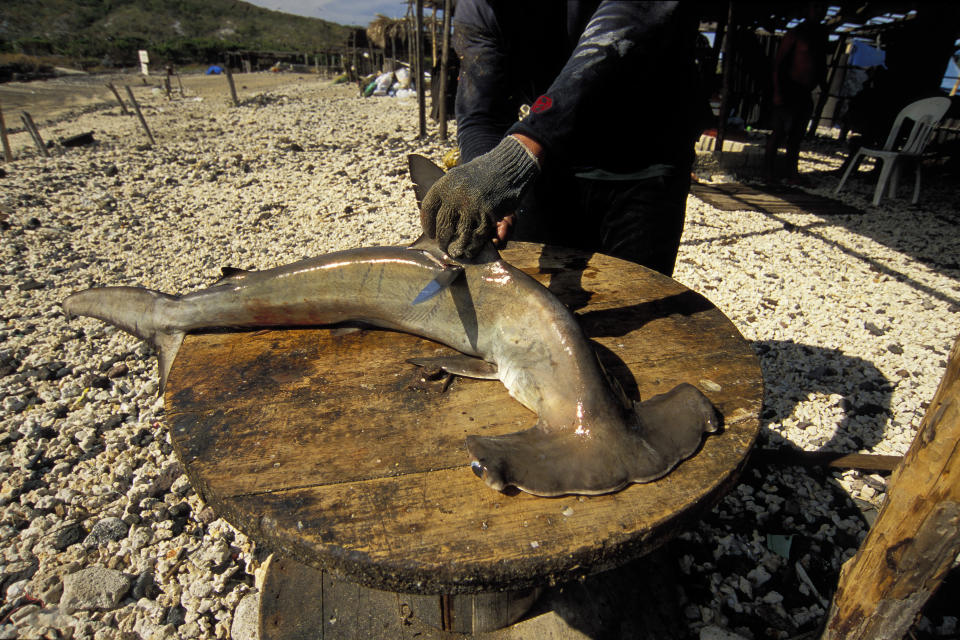Canada's new animal rights laws are paper tigers, but they won't be forever: Animal rights lawyer

There are at least four animal protection bills awaiting approval to become law in Canada right now.
While some of them will die on the table, what they symbolize is paradigm shift regarding the way Canadians think about animal welfare.
And one prominent animal rights lawyer says that is a vital sign of progress that should not be discounted.
“Even if it is just symbolic, I think it’s definitely a positive sign,” said Jennifer Friedman, an animal rights lawyer and the first ever General Counsel for the Ontario Society for the Prevention of Cruelty to Animals.
“It’s time to start taking animal welfare and animal rights seriously, and Canadians truly want things to be better for animals.”
This month, in addition to announcing a ban on harmful single-use plastics by 2021, the federal government announced a ban on keeping marine mammals in captivity.
Once Bill S-203 receives royal assent and becomes law, whales and dolphins can no longer be bred or kept in captivity, nor can they be imported and exported except for the purpose of scientific research or for the “best interest” of the animal.
The bill includes a grandfather clause that will allow marine institutions to keep marine mammals that were born or conceived before the bill passed, but those animals can’t be used for entertainment. MarineLand, located in Niagara Falls, owns approximately 50 whales and several dolphins.
There are also bills currently before the Senate or the House of Commons that would ban the importation of shark fins, non-penetrative sexual assault on animals, cosmetic testing on animals and activities around animal fighting.
Some of them are are unlikely to pass before parliament rises for the summer on June 23 or before the federal election in the fall. They will need to be reintroduced from scratch subsequent sessions of parliament. Others that pass will probably not lead to substantial change at first, but Friedman says their very existence will challenge the way of thinking that limits their effectiveness.
“I’ve always said, particularly in the realm of animal law that it’s crawl, walk, run,” Friedman said. “While we’re probably at the walking stage still, it shows to me there’s genuine promise things are picking support and speed.”
What makes new animal protection statutes in Canada more symbolic than practical right now is the fact that Canada lacks judicial branches dedicated to investigating and prosecuting people and organizations who break those laws.
Therefore, while the laws exist, they are hard to enforce.
There are organizations that fund special prosecution for animals in Canada, but it’s not really built into our public legal systems.
“There isn’t someone right now, provincially or at the federal level that I’m aware of, that is charged with the responsibility of pursuing all these cases, like a specialized prosecutor,” Friedman said.
In the U.S., many states have multiple animal crimes units with special investigators and district attorneys who only do animal prosecutions. For example, Sacramento, Calif. has an animal crimes unit including a task force, lead prosecutor, investigator and stakeholders. They all work together and their only job is to handle animal cruelty cases.
Friedman said Canada lacks that judicial branch, whether because of a lack of resources or an unwillingness to allocate the resources.
“Whether we have these statutes or not, we need the infrastructure in place to ensure that they’re not just paper tigers, that they’re actually enforced,” she said.
But they won’t be paper tigers forever. If the recent increase in animal protection legislation proves anything, it is that the people who represent Canadians see growing concern among their constituents about animal welfare, and they are responding to it.
This is especially apparent in the ‘Free Willy’ bill, which received support from Conservative, Liberal and NDP MPs. This shift in the way Canadian citizens and lawmakers think about animals and their rights, Friedman said, should also lead to progress in the area of enforcing animal protection laws.
“I think there’s two phases to it, and they’re not necessarily happening at the same time,” she said. “There’s the paradigm shift, the statutes and the regulations that are necessary, and then there’s the resources and inclinations to actually enforce them.”
That’s not to say there hasn’t been any progress on the enforcement side. Friedman approached the Ontario Bar Association around 2005 to discuss creating an animal law section within the association, similar to sections for criminal law and real estate law. The idea was rejected, so she tried again in 2012.
That time, the bar association accepted the idea with “overwhelming support,” and Ontario became the second province after B.C. to accept an animal law section.
“And to me, that shows a big change not just in the legal realm but also by Canadians,” she said.
“It’s proof to me that things are moving in the right direction, that they are being brought to the table.”
Here are some of the animal rights bills have been brought to the table and could potentially become law this year.

Shark fin ban
There are currently two bills on the table that aim to ban the importation of shark fins in Canada.
Bill S-238 is a private member’s bill tabled by Conservative Nova Scotia Sen. Michael MacDonald. However, it isn’t likely to become law before parliament rises for summer.
So Bill C-68, another bill that is further along in the legislative process, has been amended to include a bar on shark fins use the same wording as Bill S-238. It passed its third reading in the Senate on June 6.
Shark finning is the practice of cutting a shark’s dorsal fin off and leaving the rest of the animal in the ocean to suffocate or bleed to death. Shark fins are commonly used in shark fin soup, a delicacy in China, which is the main importer of shark fins.
After China and Hong Kong, Canada is the largest importer of shark fins, bringing in more than 148,000 kg, $3.2 million worth, in 2018 alone.
Aside from the obvious cruelty of the practice, scientists warn that the widespread killing of apex predators in the world’s oceans will disrupt dish populations and ocean ecosystems.

Bestiality and fighting
Bill C-84 aims to update sections of the Criminal Code to address gaps in the law regarding bestiality, as well as strengthen laws around animal fighting. It passed its second reading in the Senate at the end of May. If it receives senate approval and royal assent before the federal election, it will outlaw non-penetrative sex acts with animals. Currently only penetrative sex acts are defined as bestiality in Canada.
It would also outlaw:
• promoting, arranging, assisting, taking part in or receiving money for the fighting or baiting of animals
• breeding, training or transporting an animal to fight another animal
• building or maintaining any arena for animal fighting, as current prohibitions are limited to building or maintaining a cockpit, which is a place used for cockfighting

Cosmetic testing
Canada is moving to ban cosmetic testing on animals, following in the footsteps of Norway, India, Israel and the entire European Union.
The Senate passed Bill S-214, the Cruelty-Free Cosmetics act, and it entered its second reading in the House of Commons on June 3.
If passed, the bill would prohibit cosmetic animal testing and the sale of cosmetics developed or manufactured using animal testing in Canada.

